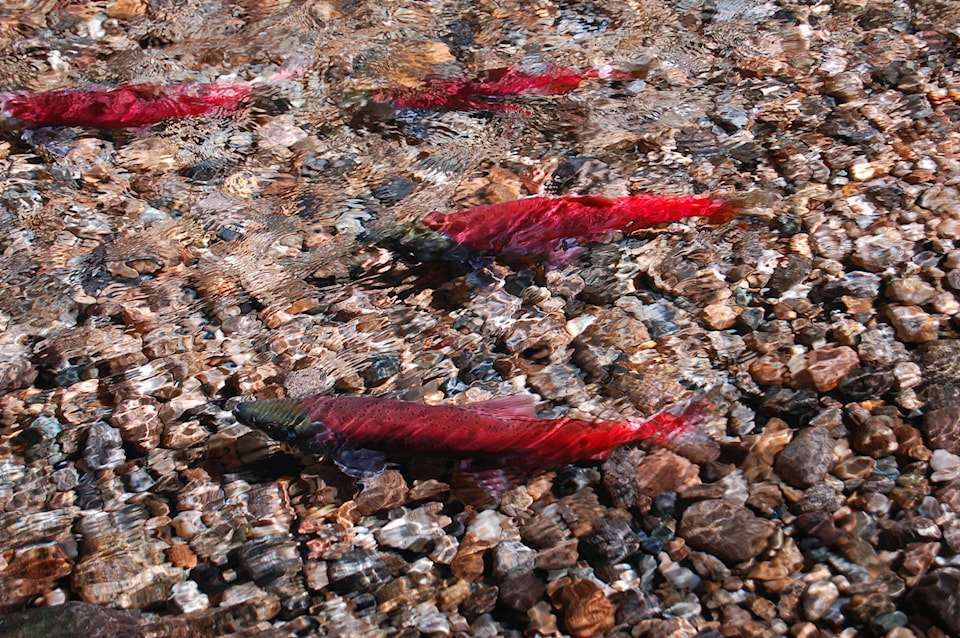By Ty Tarvyd and Brady Ward
As summer ends and the leaves begin to fall, many people make their way to Kokanee Creek spawning channel. They go to take in the sight of the bright red kokanee salmon as they lay their eggs in the custom-built spawning channel at the park.
Thousands of kokanee or landlocked sockeye salmon every year make their way into Kootenay Lake’s many tributaries to complete a goal four years in the making. However, after multiple studies on Kootenay Lake populations of kokanee, it seems there is a problem. Kokanee populations are not as healthy as we once thought.
As each year passes, all the fishing, predation and continual demand from industry has caused serious harm to kokanee populations in Kootenay Lake. Additionally, highways and urbanization have caused loss of spawning habitat all over the lake.
Historical forestry practices lead to erosion and degradation around important spawning habitat and riparian areas required for kokanee spawning. Kokanee salmon are an important prey source for Gerrard rainbow trout, bull trout, bears, and are a popular species to fish for has caused salmon numbers in the lake to plummet to fewer than 40,000 individuals.
It may seem like a big number, but it really isn’t to support all that want to eat some. Predation is a natural process, but all the other effects are connected to humans and have likely strongly contributed to the great destruction to the kokanee populations in Kootenay Lake. In recent years, locals along with industry have taken initiative in efforts to increase this population.
Recovery efforts can be categorized as effecting two ends of the problem. On one end, increase fish populations and on the other end, take fewer fish out.
Growing more fish starts with increasing egg survival. BC Hydro has increased water levels during the late summer months to increase the survival rate of shallow water spawners along the shore of Kootenay Lake. BC Parks along with the help of many corporations built the Kokanee Creek spawning channel in 1985 to try and increase the survival rates of kokanee in the lake.
A fence has been built around the channel to deter wildlife and humans from causing destruction to the channel. Flows in the Duncan River have also increased during spawning time to allow for easier fish passage in the river near Meadow Creek where large numbers of salmon reproduce in the spawning channel at Gerrard.
Also growing more fish means to feed them. One of the largest contributions to the increase of kokanee populations in the lake is the fertilization project. Researchers have been adding nutrients into the lake to increase zooplankton numbers which is the kokanee’s main food source. The fertilization project along with all others has increased the population of kokanee salmon in the lake over the last several years.
Growing more fish can also be done in artificial tanks. In 2016, the Freshwater Fisheries Society of BC stocked over a million kokanee into Kootenay Lake, in efforts to restore kokanee numbers.
Finally, taking fewer fish out. The BC government opened the catch limit of bull trout in the Duncan River to two fish per day. Bull trout are major predators of kokanee salmon and the hope is that more will survive to spawn even more kokanee salmon.
Cross your fingers but it may be safe to say things are looking up for the kokanee salmon in the area due to the work being done all over the lake. So, if we can continue all the practices put in place, it will not be long before the kokanee salmon populations in Kootenay Lake are healthy and sustainable once again.
Ty Tarvyd and Brady Ward are second year recreation, fish and wildlife students at Selkirk College in Castlegar.
